PETA Exposé: Geese Carried by the Neck, Crushed, Suffocated—For Their Feathers and Flesh
PETA’s eyewitness exposé of James Valley Colony Farms (JVC)—which bred 130,000 geese per year for their feathers and flesh—revealed that workers rounded up panicked animals, grabbing and carrying them by the neck, and crammed them into densely packed cages for transport to slaughter. Some geese were left in the filthy crates for up to 24 hours without food or water, including during a trip to the slaughterhouse lasting over five hours.
See for yourself what really happens to birds exploited for their down, and help stop this cruelty.
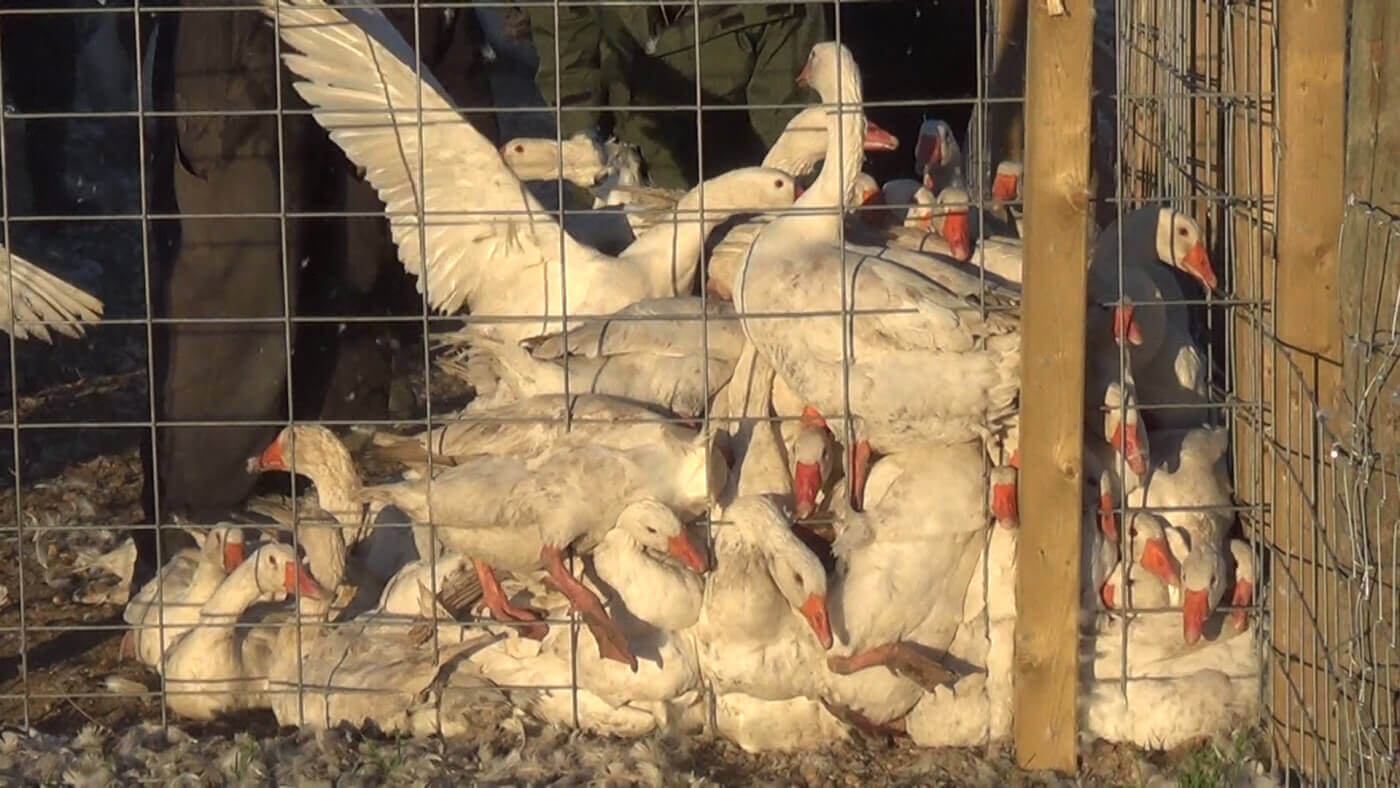
Gasping for Air and Shrieking in Distress
To make it faster to round up the geese for transport to slaughter, workers herded them into small wire pens, where they visibly panicked and trampled each other. Geese on the bottom of the pile were crushed. At least one died, and a worker tossed the dead bird over the fence.
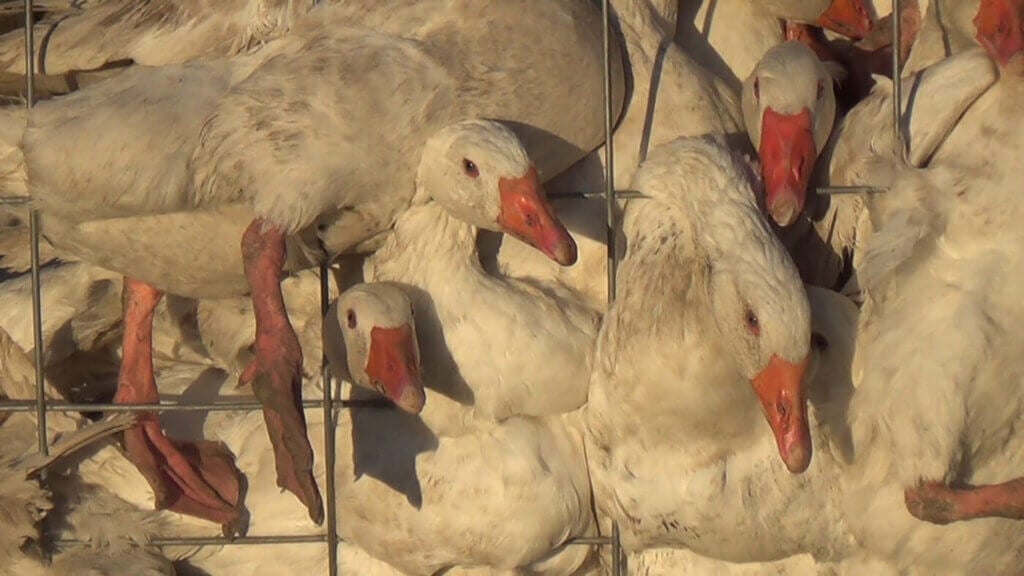
Grabbed and Carried by the Neck
After the geese were confined to the pens, workers started grabbing them by the neck—often two in each hand—and hauling them to transport crates, as they shrieked and flapped their wings in distress. One worker repeatedly stepped on geese while reaching for other ones. Then they were crammed into the crates with such force that the cages can be heard clanging in the video.

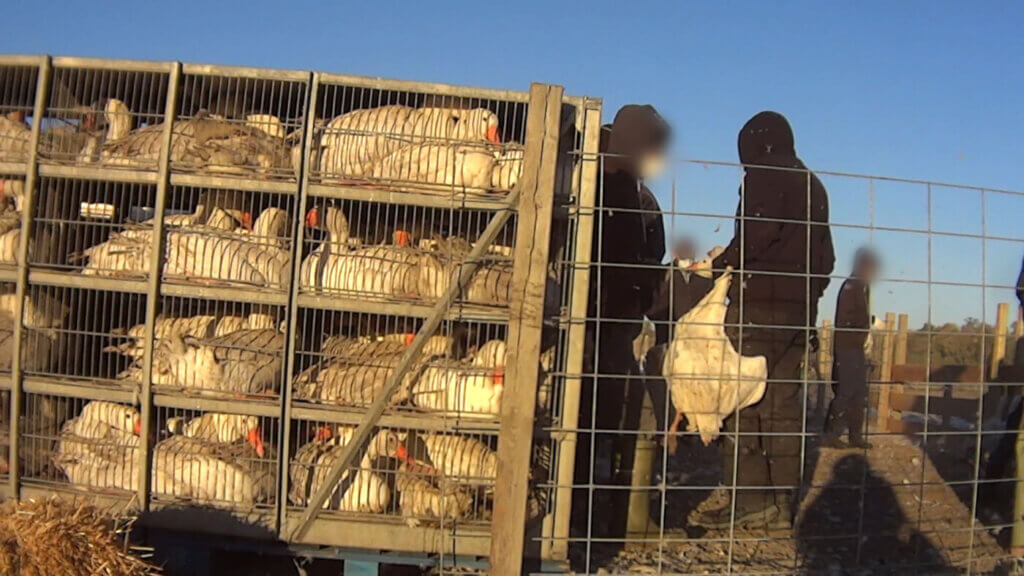
Confined to Cramped Cages for Up to 24 Hours
The cages were so small that the birds were unable to hold their heads up even while sitting. A veterinarian who viewed the footage said, “Being confined to these small crates for prolonged periods would cause painful muscle cramping, unnecessary stress, and predispose anxious birds to injury.” After a trip down the highway to the slaughterhouse lasting over five hours, some geese were left in the feces-covered crates for up to 24 hours without food or water.

Watching in Terror as Other Geese Are Shackled and Killed
JVC sent geese to Schiltz Foods in South Dakota—the largest goose slaughterhouse in North America—a grueling five- to six-hour journey (not counting any border-crossing delays), often in frigid temperatures. Once the birds were unloaded for slaughter, they saw workers grab their flockmates by the neck, stun them, shackle them upside down by the legs, and cut their throats. Then it was their turn. A PETA investigator saw that some birds continued flapping their wings and moving their heads as they bled out. A veterinarian who watched the video footage stated that these birds “are showing signs of consciousness and sensibility”—meaning that they were awake as they choked, suffocated, or died of blood loss or shock, “an extremely painful and anxiety provoking condition.”
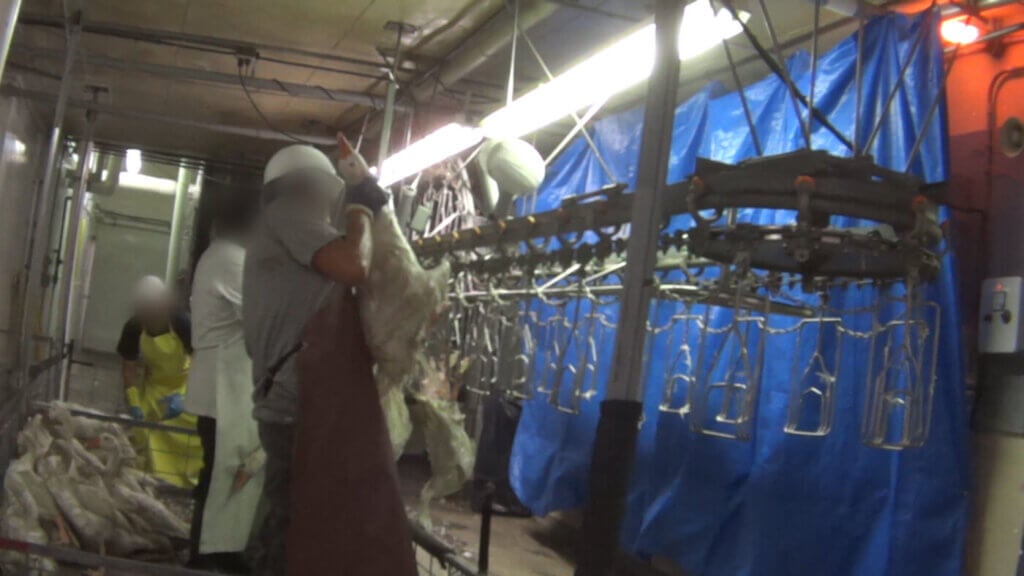
Why Do They Have ‘Red Elbows’?
A PETA investigator documented that about half of the birds from JVC had bruises on their wings—or even broken bones or dislocated joints—when they were being butchered. When the investigator asked why the birds had “red elbows,” a supervisor at the slaughterhouse responded, “from putting them in the cages.”
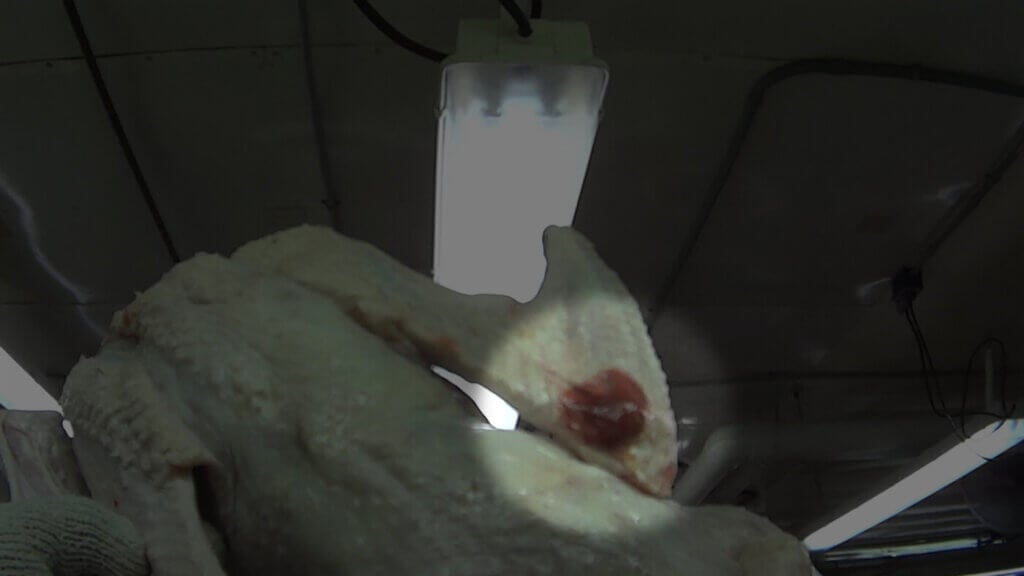
Multiple PETA Exposés Have Uncovered Cruelty in the Down Industry
This is not the first time that PETA has exposed the down industry’s cruelty to geese. In 2012, we released footage of workers tearing out live geese’s feathers, also known as “live plucking.” In the years that followed, companies faced a loss of confidence by consumers, so they came up with international standards claiming to ensure “responsible,” “non live-plucked” down. But in 2016, PETA’s video exposé from inside farms that supplied certified and “responsible” companies revealed that workers were still tearing out geese’s feathers—leaving open, bloody wounds—while the birds were fully conscious, despite assurances to the contrary. And when eyewitnesses spoke with farmers and buyers who had links to so-called “responsible” companies, they bragged about misleading consumers by hiding and mislabeling their live-plucked down or admitted to dealing in live-plucked feathers.
There’s no way to tell by looking at down feathers whether the bird they came from was repeatedly live-plucked or killed for flesh—the companies who buy the feathers aren’t even certain. But one thing IS certain—all down comes from birds who are eventually killed in a violent way.
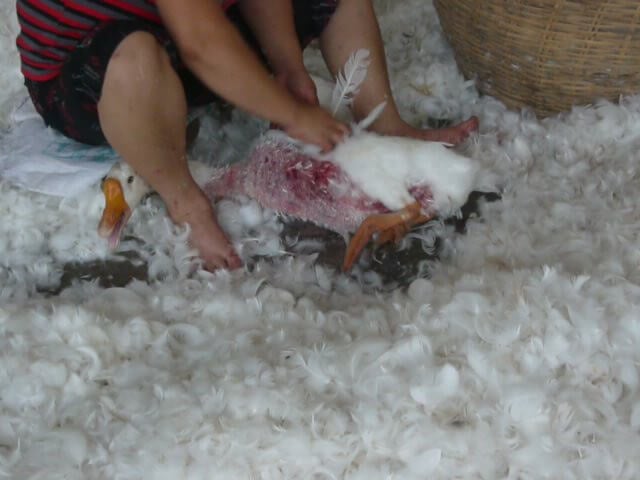
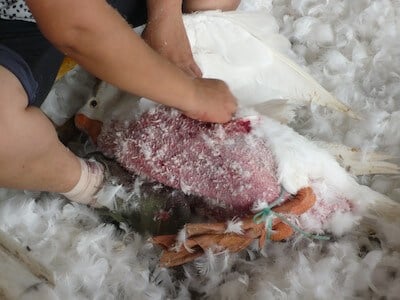
What You Can Do to Help Geese
Please, for the sake of these animals, always check the label, and if it says “down,” leave the item on the shelf. Instead, choose from the wide range of vegan insulators made out of materials such as bamboo fibers, flowers, coconut shell derivatives, and even recycled plastic bottles.
Take Action Now
By signing the pledge below—and encouraging your friends and family to do so as well—you’ll be sending a powerful message to the cruel down industry.
